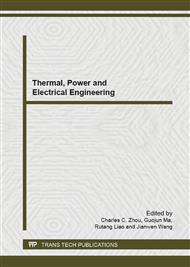p.999
p.1005
p.1010
p.1016
p.1023
p.1029
p.1033
p.1038
p.1045
Distribution Network Reactive Power Planning Based on Improved Evolutionary Strategy Theory
Abstract:
In this paper a distribution network reactive power planning mathematical model was established, taking the minimized sum of electrical energy loss at the different load operation modes and the investment for reactive power compensation equipments as objective function to solve the planning question respectively and taking the transformer tap as equality constraint. The evolution strategy is improved, The Euclidean distance is introduced into the formation of the initial population, and the initial population under the max load operation mode is based on the optimal solution of the min load condition. The Cauchy mutation and variation coefficient are introduced into the evolution strategy method. By means of improvement of fitness to ensure diversity of population in early and accuracy of the fitness value.
Info:
Periodical:
Pages:
1023-1028
Citation:
Online since:
August 2013
Authors:
Price:
Сopyright:
© 2013 Trans Tech Publications Ltd. All Rights Reserved
Share:
Citation:


